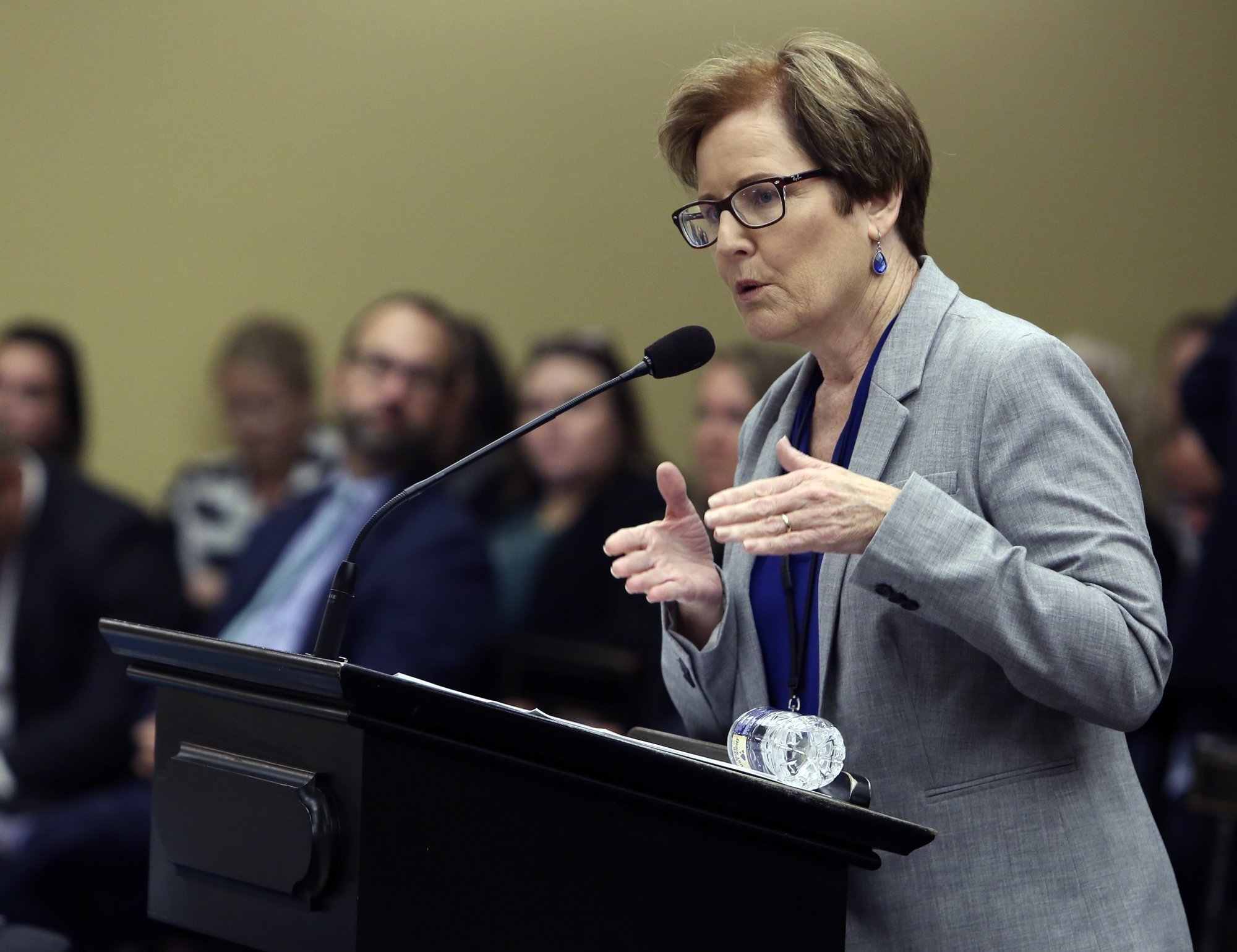Side Effects
Ohio getting a better deal from PBMs, but many questions remain
Medicaid Director Maureen Corcoran said Ohio is getting a better deal on prescription drugs since switching to a new drug-pricing system designed to rein in pharmacy middlemen.
A new analysis released Monday showed pharmacy benefit managers, or PBMs, are no longer paying pharmacies far less than they bill the state.
“Absolutely,” Corcoran said when asked if initiatives to reform the system were working, while adding that more must be done.
"While this report is a positive step forward in shining the light on the inner workings of a vital segment of the state's Medicaid program, there is much more work to come," she said in a letter to legislative leaders.
However questions remain about Medicaid’s $3 billion a year drug program:
• Because of technical issues, the analysis by Health Plan Data Solutions, a Columbus consultant, included only 80% of Medicaid transactions. Medicaid officials say the other 20% of the data are not atypical and thus would not affect the overall analysis.
• The PBMs improperly categorized more than a dozen types of drugs as "specialty" drugs, “which may lead to over-payments and raise concerns about conflicts of interest.” Medicaid officials say the typically much-higher specialty drug price was not charged for several of those prescriptions.
• While reimbursements for pharmacies went up, one PBM increased them far higher than the other — almost three times as much for independent pharmacies, said the report, which did not identify the PBMs. That conclusion echoed a key finding from a June Dispatch analysis of more than 400,000 prescriptions from about three dozen pharmacies across the state: pharmacy reimbursements from the Medicaid's largest PBM, CVS Caremark, were less than half of those from rival PBM OptumRx.
• Prices for 30 drugs were deemed "overpriced" in the study, while 31 others were found "underpriced." Antonio Ciaccia, lobbyist for the Ohio Pharmacists Association, said a disproportionate amount of the overpriced drugs are specialty drugs. The study found prescriptions for more than 40% of specialty drugs are filled by pharmacies tied to a PBM. But the lion's share of the underpriced drugs are usually filled by community pharmacies, Ciaccia said.
Among the underpriced drugs was buprenorphine-naloxone, or generic Suboxone, which reverses opioid overdoses. In late 2017, PBMs set the amount pharmacies were getting for Suboxone so low that many could not afford to stock the antidote.
Although the highest percentage of specialty drugs were filled by PBMs or companies affiliated by the managed care plans hiring them, researchers “did not find any clear evidence of anti-competitive steering” but said “the potential exists.”
The long-awaited analysis of nearly 9 million prescriptions filled in the last quarter of 2018 vs the first quarter of 2019, Corcoran said, will help answer how money is being spent and what additional changes may be needed.
“How much did PBM spend? How much did the managed care plan spend? Plus, how much were pharmacies paid? Here’s what was the whole black box identified in the first report” by the same consultant last year, she said.
But in response to a Dispatch question, she also said, “Have we saved the state money? That wasn’t the point. The point was transparency and so that we could continue to work on” necessary changes “in an educated way.”
The 20-page report showed PBMs’ chronically low payments to local pharmacies had improved but it remains unclear whether reimbursements are enough to cover their actual costs.
The state’s new pass-through pricing model netted an additional $38 million — a 5.7% increase — in the rates paid pharmacies to fill prescriptions during the first quarter of this year compared to the final quarter of last year. Under the previous “spread-pricing” payment system, low reimbursements to pharmacists helped boost PBM profits and forced some pharmacies to close.
Medicaid officials acknowledged that they don’t know if rates are sufficient because they don’t know how much pharmacies pay for the medications.
The plans and their PBMs spend about $50 million per quarter administering pharmacy benefits, roughly 6% of the $800 million drug spend.
The tax-funded Medicaid program insures nearly 3 million poor and disabled Ohioans.
Pharmacy benefit managers are hired by Medicaid managed care plans to oversee drug benefits.
Medicaid commissioned the report after a study by the same consultant last year found that Medicaid’s two PBMs, CVS Caremark and OptumRx, billed Medicaid $244 million more in a single year than they paid pharmacies, allowing them to profit three to six times the industry standard.
In response, Medicaid officials banned “spread pricing” and on Jan. 1 implemented a “pass-through” pricing model, one that requires PBMs to pay pharmacies the same amount they bill the state.
Corcoran said state officials are taking a number of steps to better control drug pricing. The state is implementing a unified preferred drug list for all managed care plans to use which should minimize confusion for patients, reduce administrative costs and maximize rebates from drug companies.
And it is rebidding its contracts with Medicaid managed care plans to keep control of costs.
The department also unveiled a new dashboard detailing a host of administrative costs to allow greater transparency and analysis.
Editor's Note: Among the underpriced drugs cited in a study of Medicaid drug prices was buprenorphine-naloxone, or generic Suboxone, which reverses opioid overdoses. A previous version of this story misnamed the drug.
